Taps Coogan – April 19th, 2022
Enjoy The Sounding Line? Click here to subscribe for free.
Enjoy The Sounding Line? Click here to subscribe for free.
The International Energy Agency (IEA) recently published a report in which they calculated the materials intensity of various renewable generation technologies and electric vehicles and then compared those results to conventional power technologies.
The Green Transition
The various green-transition plans have two main prongs. The first is to replace the world’s internal combustion powered vehicles with electric vehicles.
The second is to switch out conventional electricity generation capacity with renewable power while simultaneously growing electricity production to accommodate the charging of electric vehicles.
Electric Vehicles
According to the IEA report, electric vehicles require roughly six times the weight of various expensive and/or rare minerals and metals, with a representative electric car containing nearly 450 lbs of copper, lithium, graphite, etc… compared to about 75 lbs for a conventional car.
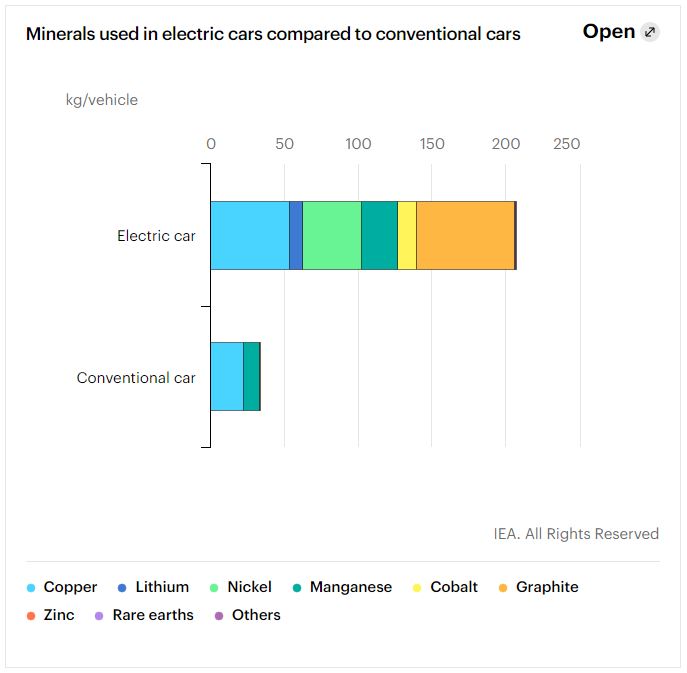
Electricity Production
The following chart shows the weights of the various materials and metals needed to produce a megawatt of power. One megawatt of off-shore wind generation capacity requires roughly 15 times as much minerals input as a megawatt of natural gas capacity. Solar requires about six times the minerals input.
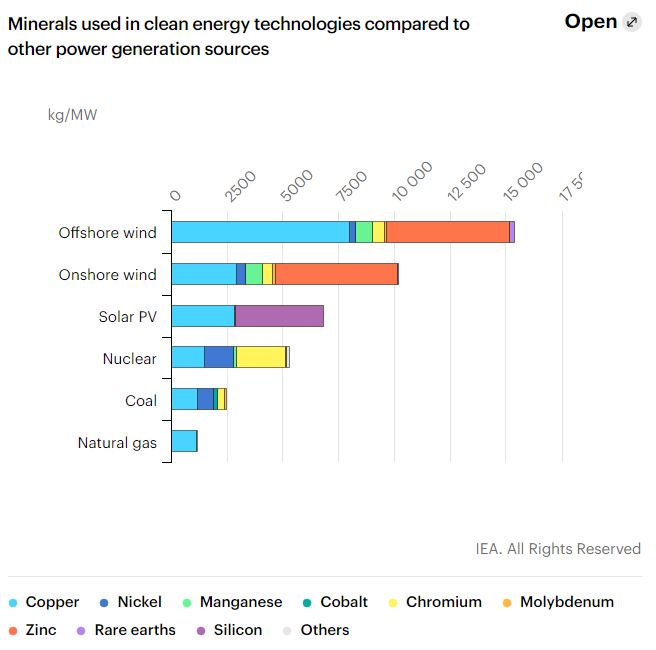
Of course, the sun doesn’t always shine and the wind doesn’t always blow. Generating capacity and actual generation are very different things for renewables. Typical capacity utilization rates for wind and solar are 45% and 25% respectively. Nuclear and fossil fuel rates are typically 80%-90%+. That means that the real world material intensity of wind and solar shown above, which is based on generating capacity, is actually two to four times higher than the chart above indicates.
Putting It Together
Based on the figures above, which are based on generating capacity, the IEA makes a few conclusions.
The IEA calculates how much of future production of various key minerals will be consumed by ‘clean-tech’ assuming production grows to meet the increased demand. Under the baseline assumption of current energy policies, they see the energy transition consuming at least of 74% of lithium production – up from 29% today, at least 40% of cobalt – up from 15% today, 32% of copper – up from 24% today, etc… To achieve Paris Accord emissions targets by 2040, the numbers are much higher, 90%+ for lithium, >60% for cobalt, etc…
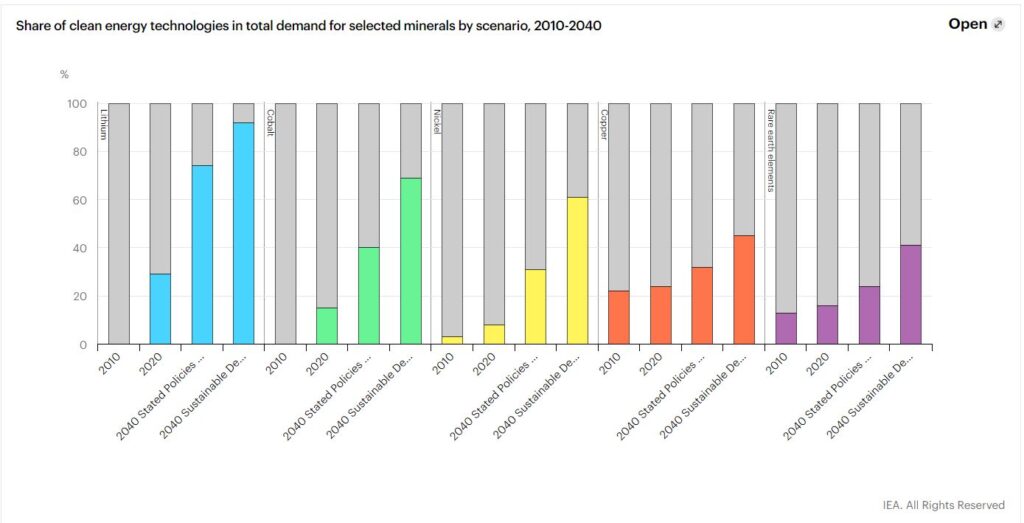
The chart above is assuming that production increases to meet the increased demand for these minerals, which begs the question: how much does production have to increase? Under the baseline scenario, production of key minerals for clean tech has to double by 2040. Under a ‘net-zero’ emissions plan, mineral production for clean tech has to increase six-fold.
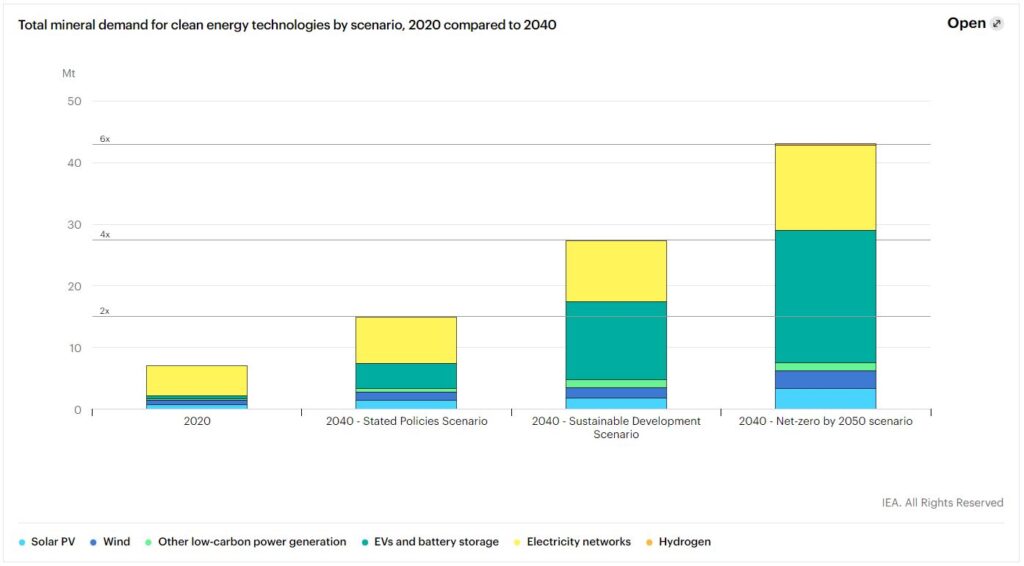
Put differently, lithium production for clean tech has to increase 13 fold to meet the current policy trajectory. It has to increase 42 times for the Paris Accord targets. The ‘Net-Zero’ scenario is curiously not listed in the chart below, probably because the numbers are too absurd. Graphite needs to grow at least eight fold. Cobalt needs to grow at least six fold. Nickel seven fold, etc…
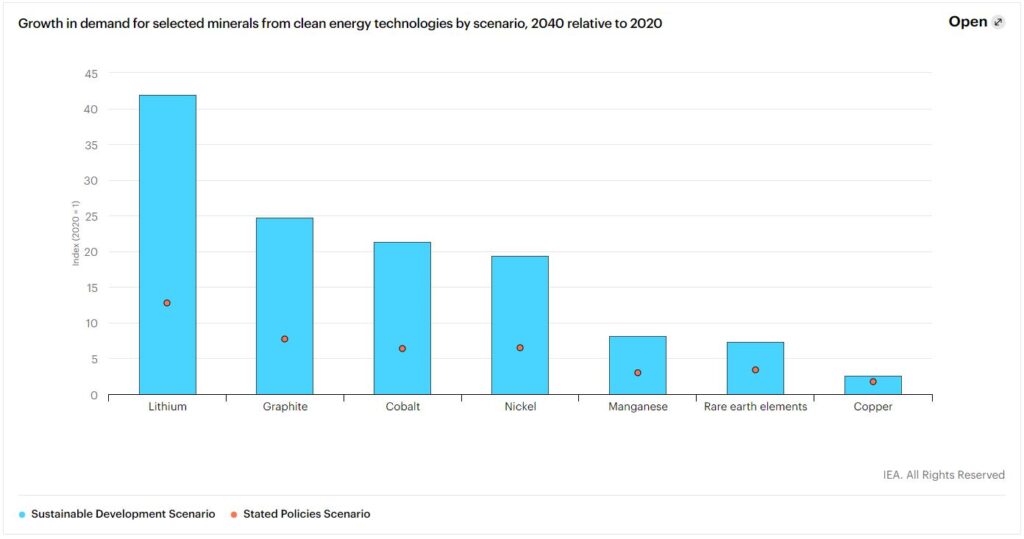
The IEA further notes:
-“Since 2010, the average amount of minerals needed for a new unit of power generation capacity has increased by 50% as the share of renewables in new investment has risen.”
-“The types of mineral resources used vary by technology. Lithium, nickel, cobalt, manganese and graphite are crucial to battery performance, longevity and energy density. Rare earth elements are essential for permanent magnets that are vital for wind turbines and EV motors. Electricity networks need a huge amount of copper and aluminium, with copper being a cornerstone for all electricity-related technologies. The shift to a clean energy system is set to drive a huge increase in the requirements for these minerals, meaning that the energy sector is emerging as a major force in mineral markets. Until the mid-2010s, for most minerals, the energy sector represented a small part of total demand. In a scenario that meets the Paris Agreement goals (as in the IEA Sustainable Development Scenario [SDS]), their share of total demand rises significantly over the next two decades to over 40% for copper and rare earth elements, 60-70% for nickel and cobalt, and almost 90% for lithium.”
For those wondering how emissions-intense all of the mining required to produce the ’emissions free’ electricity and electric cars will be, the IEA estimated attempted to estimate the lifetime emissions profile of an electric vehicle, including the material and manufacturing related emissions. They concluded that, under two scenarios of the emissions intensity of minerals extraction, electric vehicles produced about half of the lifetime emissions of a conventional car with an error bar that includes the entire reduction in emissions. Again, the IEA appears to be basing this off of an assessment of the materials intensity of renewables that uses their nameplate generating capacity, not real world generation, so err on the worse side of those error bars.
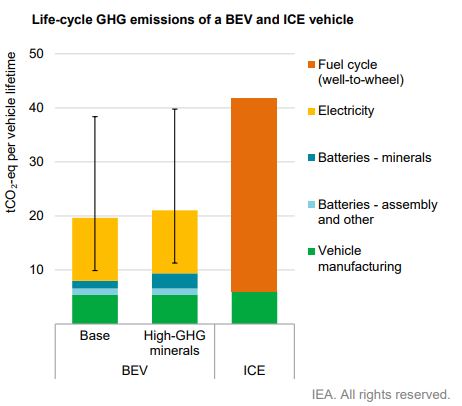
Anyone who knows how long, difficult, and capital intense it is to permit a new mine, knows that these sorts of production increases within the span of 18 years is practically impossible. A large mine can take a decade or more to bring online, even in countries with low regulatory hurdles. It doesn’t help matters that the current US administration blocked or canceled essentially every single large mining project in the US in their first year (here, here, here, here, here, here, etc…).
People tend to take either an ‘all-or-nothing’ approach to renewables, arguing for either 100% renewables or writing them off as totally useless. The reality is of course more nuanced. Renewables penetration of perhaps 25% of generation makes fairly good sense for environmental and economic reasons. However, their ability to scale beyond that has been exaggerated as you run into grid stability problems as well as materials and land use constraints. That’s too bad, but it is the reality of the situation.
For now, the fastest and most cost-effective way to reduce emissions likely remains coal-to-gas switching and nuclear.
Would you like to be notified when we publish a new article on The Sounding Line? Click here to subscribe for free.


There is NOTHING sustainable about US domestic or foreign policy over the past decade. This renewable green-NRG nonsense is political theater with a darker twist. The system will blow up before any of these ‘goals’ are 50% achieved. But good work pointing out how ridiculous the goals are.
Ah, but don’t you see……the precious mineral “smug-obtanium” ,which is a byproduct of the ruinous low carbon production scheme, is all that matters most to the green mafia. Common sense, environmental protection, starvation, and shivering in the cold for vast swaths of the planet’s peoples be damned. We have narcissitic egos of the affluent left which need stroking.